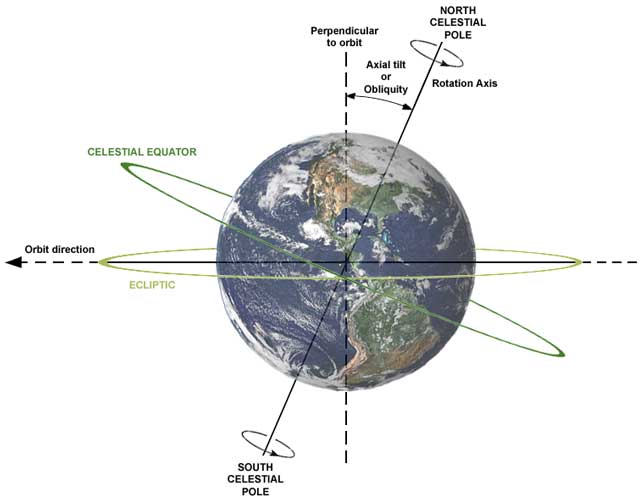The celestial equator is inclined by ~23.5° to the ecliptic plane. The image shows the relations between Earth's axial tilt (or obliquity), rotation axis and plane of orbit.. (*) The celestial equator is a great circle on the imaginary celestial sphere, in the same plane as the Earth's equator. In other words, it is a projection of the terrestrial equator out into space. As result of the Earth's axial tilt, the celestial equator is inclined by ~23.5° with respect to the ecliptic plane. An observer standing on the Earth's equator visualizes the celestial equator as a semicircle passing directly overhead through the zenith. As the observer moves north (or south), the celestial equator tilts towards the southern (or northern) horizon. The celestial equator is defined to be infinitely distant (since it is on the celestial sphere); thus the observer always sees the ends of the semicircle disappear over the horizon exactly due east and due west, regardless of the observer's position on Earth. (At the poles, though, the celestial equator would be parallel to the horizon.) Celestial objects near the celestial equator are visible worldwide, but they culminate the highest in the sky in the tropics. The celestial equator passes through these constellations: * Pisces See also Retrieved from "http://en.wikipedia.org/"

|
|
||||||||||||
